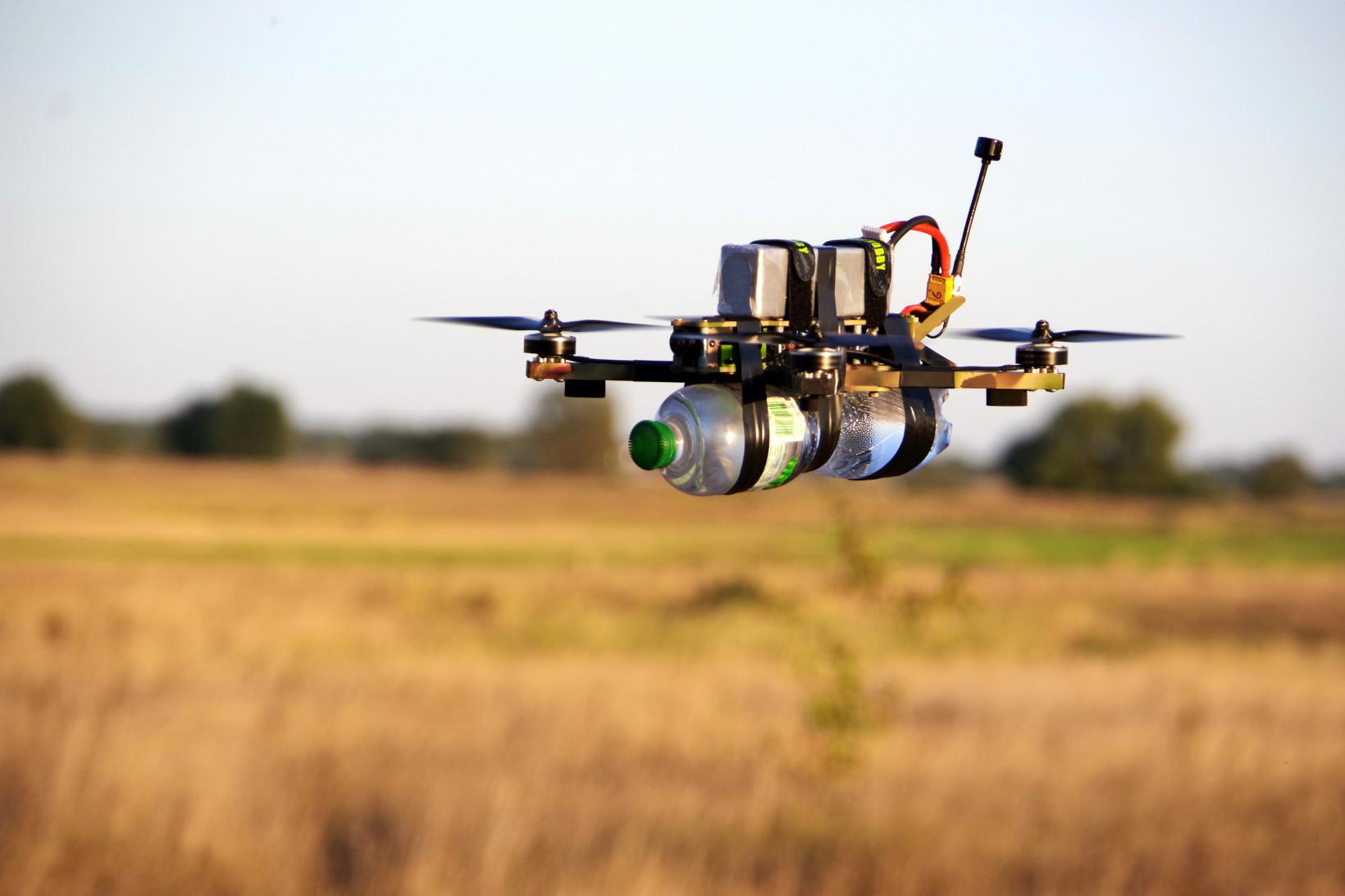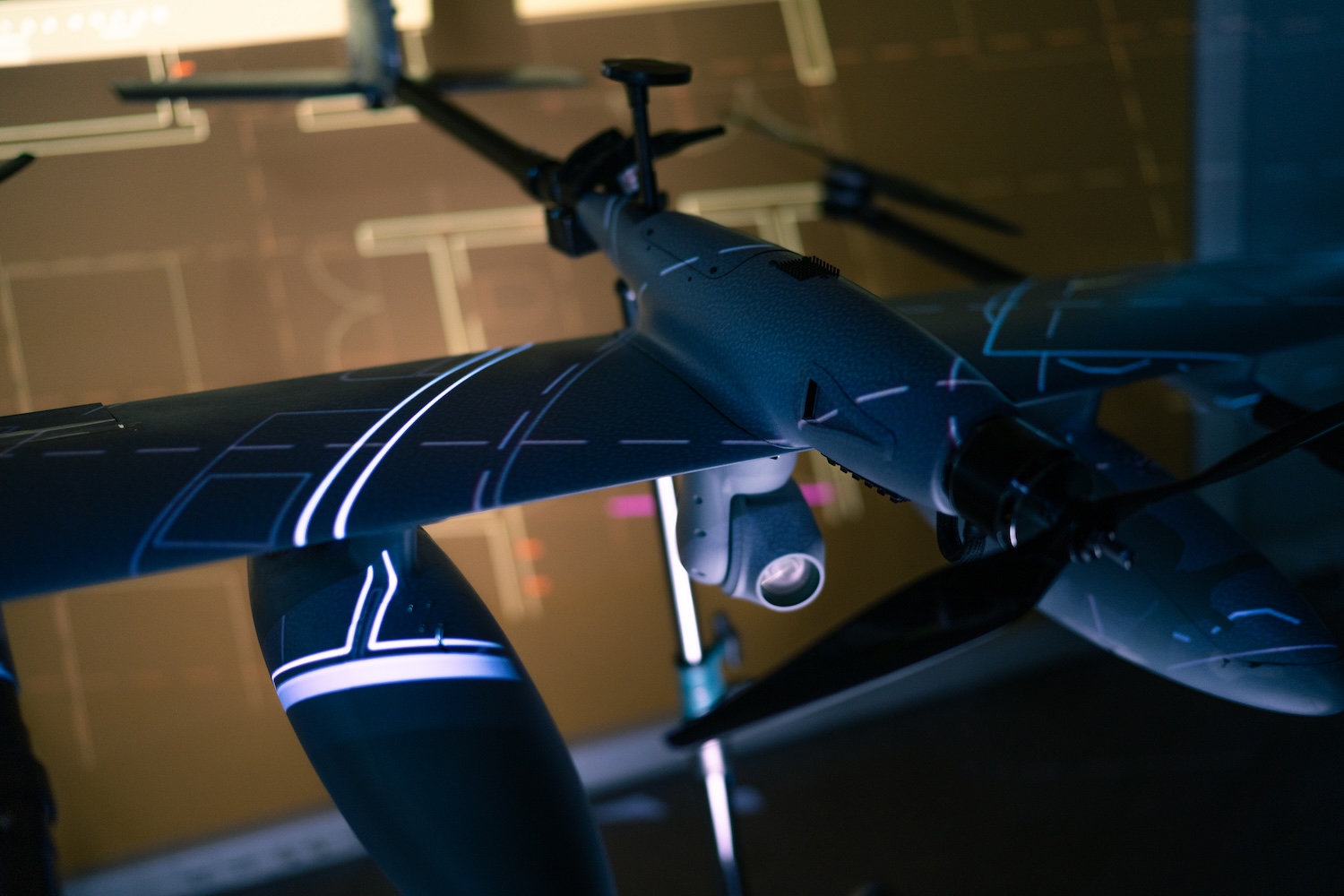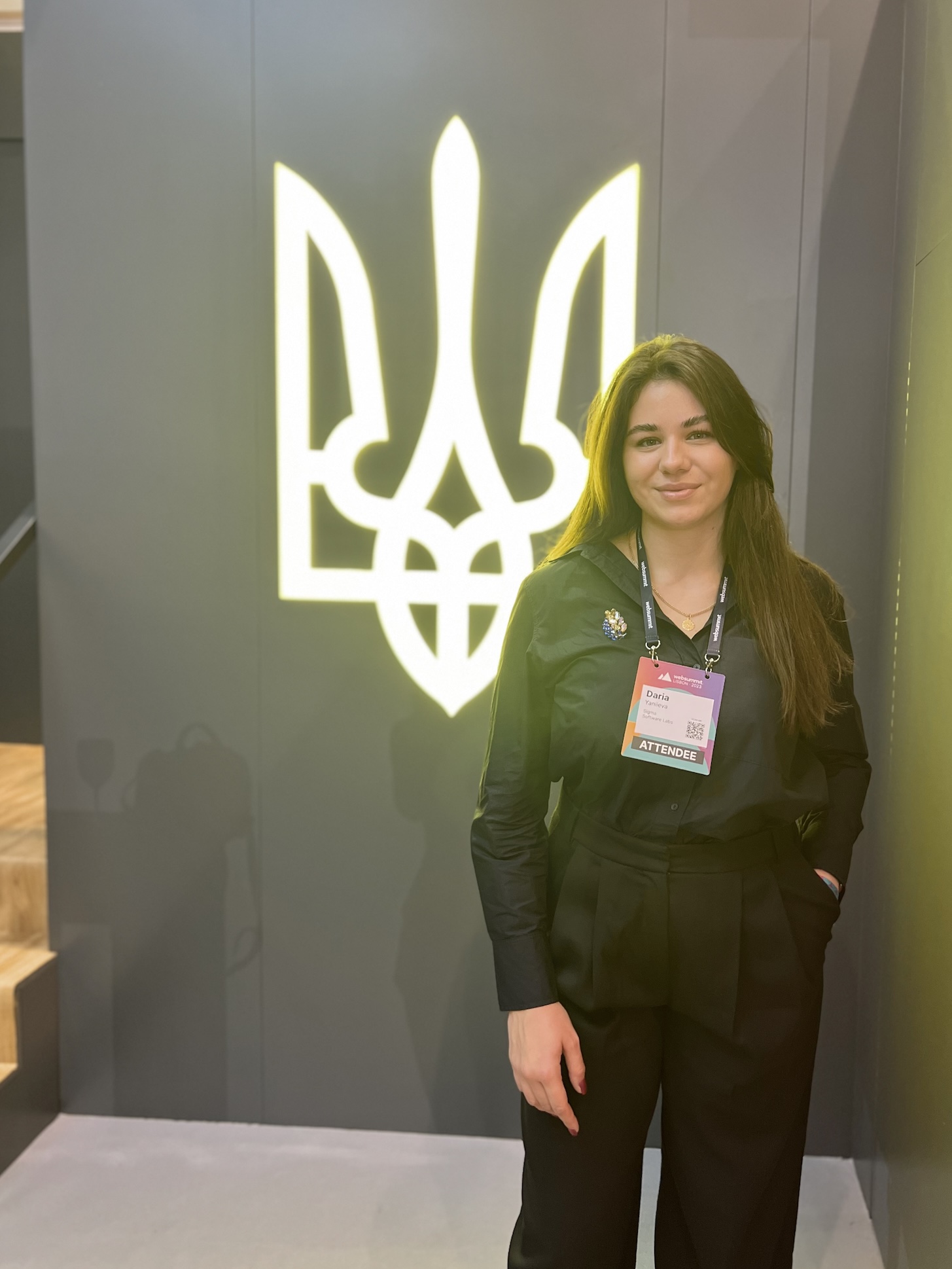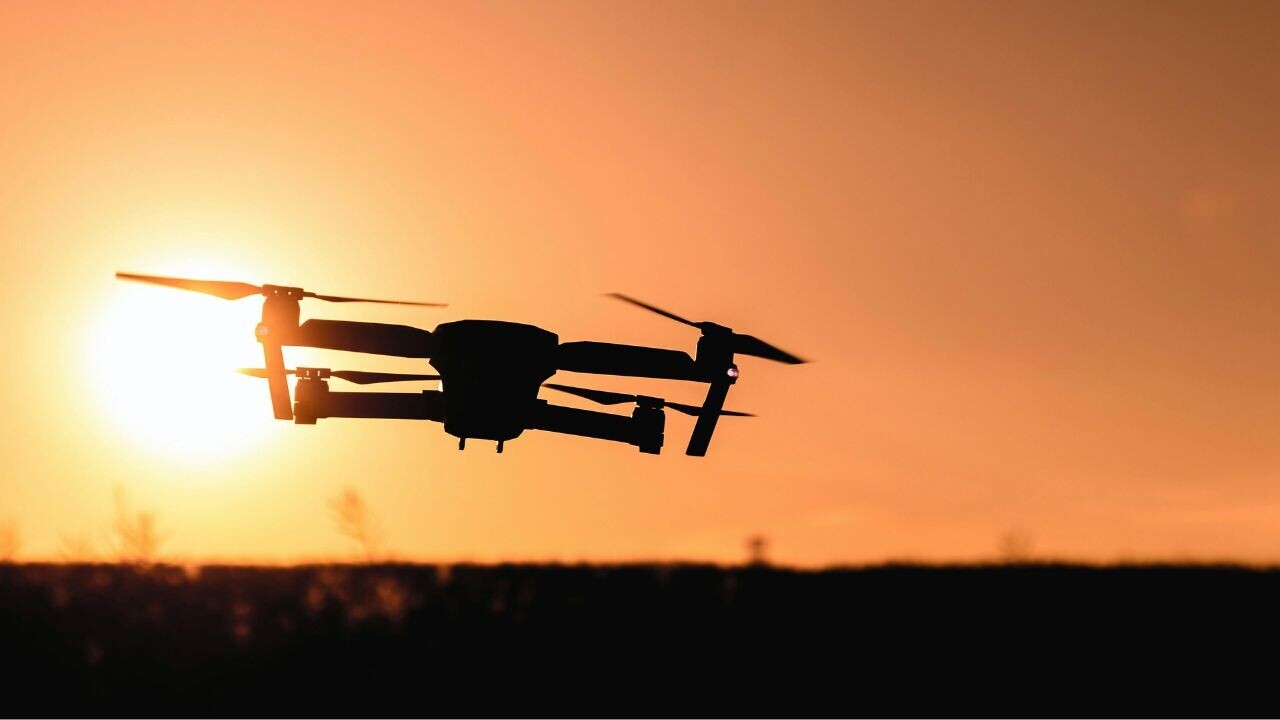Juggling two jobs is hard work. It’s particularly hard work when one of the jobs is in a warzone. But for Ivan Kaunov, the roles are complementary.
As the CEO and co-founder of Buntar Aerospace, Kaunov develops drones for long-range flights. As a member of the Ukrainian Armed Forces, he flies drones on combat missions.
“We’re using them on the battlefield and we know what works, what doesn’t, and how they should be changed to fit the modern warfare reality.” the 33-year-old tells TNW on a video call from a classified military facility. “We have the fastest feedback loop ever.”
The loop feeds back to Kaunov’s business. Buntar has already tested its unmanned aerial vehicles (UAVs) in the field. The startup now wants to scale production for military reconnaissance.
It’s a plan with powerful supporters in Ukraine, which has become a testing ground for drones. From the skies, they’ve destroyed oil refineries deep within Russia. Beneath the seas, they’ve sunk warships in occupied Crimea. On territory controlled by Kyiv, they’ve demined vast expanses of land, conducted overhead surveillance, and even engaged in drone-on-drone dogfights.
The war in Ukraine has ushered in a new era of aerial conflict. It’s also ushered in a new wave of drone startups.

In the two years under Russia’s full-scale invasion, Ukraine has relied heavily on UAVs built overseas. China’s DJI drones continuously hover over the heads of soldiers. Turkey’s Bayraktar machines are so popular that they’ve inspired a viral song.
These vehicles have proven powerful — but they come with baggage. Deliveries to a country under invasion are often complicated. Demand outstrips supply and foreign manufacturers can have conflicting alliances. Local production can offer safer, cheaper, and faster tech.
Kyiv has responded by ramping up investment in domestic UAVs. Over 90% of the drones Ukraine now uses on the front lines are indigenously made, government officials said last month. In 2024, the country aims to produce 1 million of them.
These numbers are driving exponential growth in UAV startups.
The drone business
According to the Ukrainian Prime Minister, there are now around 200 companies producing drones in the country. Just a year earlier, there were only seven.
One startup launched during the war is Celebra. The company develops a varied fleet of drones, from fixed-wingers for surveillance to quadcopters that strike targets.

Celebra also brings military experience to the business. Team members have fought in battles and flown drones to defenders of the Azovstal steel plant, the last pocket of resistance in the 2022 siege of Mariupol.
“No one taught us, so we gathered information bit by bit,” Yakiv Ostash, the startup’s founder, tells TNW. “Then we joined forces with guys who already had experience. At first, we learned how to ‘fly’ and formed UAV combat units.”
The deployments have diversified since then.
During a single week in early 2024, the country’s drone units reportedly destroyed 73 Russian tanks, alongside air defence systems, fuel storage depots, and hundreds of other high-value targets.
These successes are fuelling hopes that Ukraine is becoming a global powerhouse for UAVs. Although the country can’t compete with the US on resources and tech, war has provided unique experience and expertise.
“We can become the leading country in the world for supplying drones to other nations,” Ostash says. “Our engineers who are currently developing all the technologies here could become the most sought-after specialists worldwide.”
With armed conflict raging on, their focus remains on the fight. But they’re already eyeing work beyond the confines of conflict.
A dual-use sector
Drones are typically dual-use, meaning they can serve both military and civil purposes. They can deliver mail as well as missiles, detect both bombs and earthquake survivors, and film enemy bases or movie scenes.
“Almost all UAVs have two or more purposes,” Viktor Lokotkov, the chief marketing officer for drone startup Skyassist, tells TNW. “For example, our UAV Sirko can be used for the agriculture sector or for rescue operations.”
The emerging tech has similar potential. Autonomous targeting can strike tanks or spray crops, while AI-controlled drone swarms can fight soldiers or fight fires.
The adaptations go both ways. Take the first-person view drones (FPVs) that transmit video feed to goggles worn by remote operators. The devices are typically modified quadcopters used for racing and photography. Just a few hundred dollars can buy one off-the-shelf. Add an RPG warhead and the toy becomes a bomber.
“There is no need to use expensive and high-tech UAVs as kamikaze,” Lokotkov says. “All you need is a piece of wires and propellers worth $250, And this cheap device can disable a tank that costs $4,000,000.”
Lauded for their low costs and high accuracy, FPVs have become ubiquitous on battlefields.
To meet the demand, the Ukraine has rapidly expanded domestic production. According to government officials, the country doubled its FPV output from 50,000 to 100,000 per month between December and February
That’s been a boon for FPV makers, but there’s a big cloud on the horizon: Russia is getting better at disrupting the cheap civilian converts. A Ukrainian drone operator told Business Insider that the Kremlin’s jammers can increasingly interrupt signals between pilot and drone.
Vitaliy Kryukov, a loitering munition commander for Ukraine’s elite Adam Tactical Group, expects basic UAVs to become obsolete quickly. Upgrades will therefore soon need to take their places.
That will be a loss to some drone startups, but an opportunity for others. As crude FPVs lose potency, calls grow for advanced systems designed by the likes of Buntar Aerospace.
Money talks
Buntar is building a reconnaissance UAV that can fly 80km away from the operation station. Built to withstand jamming, the vehicle uses a multi-rotary system to take off. It then switches to an aircraft flight mode, which reduces the risk of operator mistakes.
The approach has caught the attention of investors. Buntar recently raised $1mn in the company’s first seed round, from investors who wish to remain anonymous.
Private funding like this, however, remains rare for Ukrainian drone startups.

Before Ivan Kaunov launched Buntar last year, he already had a successful startup career. The Kyiv native is best known for co-founding Finmap, a cash flow management tool with over 2,500 clients across more than 20 countries.
Kaunov’s work at Finmap led him to Sigma Software Labs, a Ukrainian startup hub and investor. Like Kaunov, the Sigma team has taken a growing interest in defence tech.
“It’s not only about weapons… This war is a tech war, and engineers will win it,” Daria Yaniieva, the company’s investment director, tells TNW.
Raised in the Russian-held city of Donetsk, Yaniieva has a personal stake in the success of Ukrainian defence tech. The 27-year-old also makes a strong case for the sector’s business potential — although she admits that private fundraising is difficult. One barrier is the slower investment cycles, often lasting up to 10 years. Another is a sense of unease about supporting military applications.

With big VC firms reluctant to splash their cash, governments must fill the funding gap. In 2023, the Ukraine Defense Minister allocated about 20 billion Ukrainian hryvnia (€476mn) to purchase drones. Deputy Prime Minister Mykhailo Fedorov said 58 Ukrainian drone makers received state contracts last year.
Allies have provided another crucial source of funds. They could also dramatically enlarge the market for the country’s UAV startups. Lokotkov from Skyassist urges them to embrace the mutual benefits.
“Our experience in using military UAVs during this war will help NATO very much,” he says.
For now, those military applications provide the clearest route to market. But a world beyond the war offers new commercial opportunities.
Ostash already has grand plans for the emerging dual-use sector.
“It’s time to start building drone development factories,” he says. “And not just for military purposes.”
Get the TNW newsletter
Get the most important tech news in your inbox each week.






